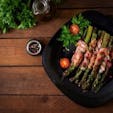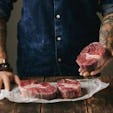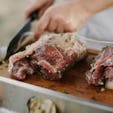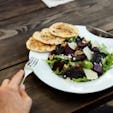No matter how dedicated you are to your diet, you can’t prepare all your meals yourself. At some point, your fridge will be empty, the grocery store will be closed, or your Tupperware will be dirty¦ and you won’t be able to bear the thought of scrubbing it clean again. You’ll have to succumb to—eegads!—having dinner in a restaurant, or picking up something from a drive-through window.
The Keto Diet Guide to Restaurants, Fast Food, and Takeout
Luckily, eating out isn’t as daunting for the dieter as it used to be. Even the strict keto/low-carb eater—who strives to avoid carbs most of the time—can find good, tasty options on the menu when indulging in almost any kind of ethnic cuisine, as well as at franchise restaurants and fast food hubs. Believe it or not, this includes Chinese and Mexican food, and chains like Buffalo Wild Wings™, McDonald’s™, and Taco Bell™.
You don’t need an iron will to see results from your diet. Just use this article as a field manual for what you should order, or ask to be modified, at several different eateries you used to think were only acceptable on cheat days.
The Challenges of Eating Out On A Keto Diet
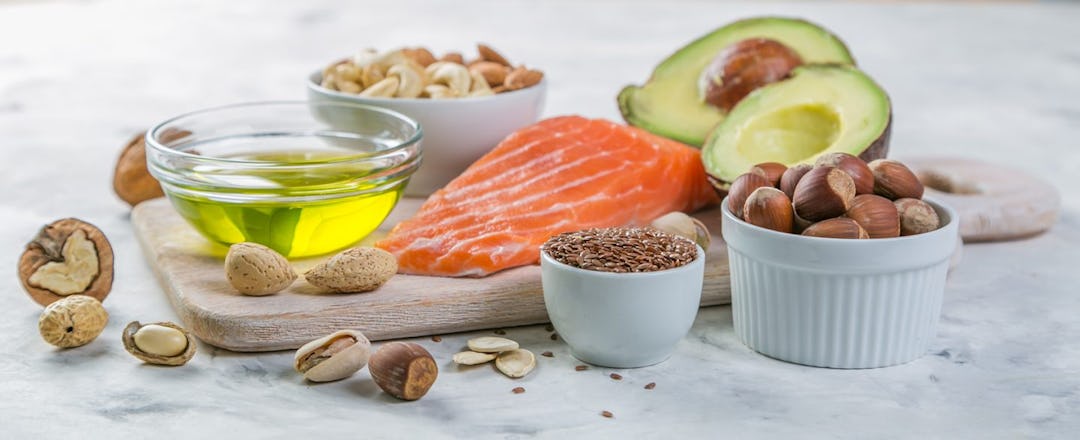
One of the great benefits of a keto or low-carb diet is that it’s pretty simple to follow (check out our free ebook on the diet HERE if you’re not sure exactly what it entails). Stick mainly to meats and green vegetables, and you’ll be able to control your carb intake without obsessing over portion sizes.
But when you head out to a restaurant, or grab fast food, all bets are off. You really have no way of knowing for sure what they’re serving you, even when you make the safest order you can. Though some cities require restaurants to list nutrition information on every menu item, this is almost always limited to calories alone and/or the macronutrients—you don’t get to see the ingredients. And even if such data is available, you can’t trust even a big name, standardized chain to publish completely accurate information. The Journal of the Academy of Nutrition and Dietetics reported that, on average, restaurants underestimate the calorie totals they list by 18%.
Mom-and-pop restaurants might offer better quality food in terms of ingredients, but any numbers they offer are even less reliable, as the chefs get creative and use a dash of this and a sprinkle of that to slightly vary their recipes every time. So if you can’t rely on restaurants’ self-disclosure to plan your meal, what can you turn to?
One increasingly popular option is apps that claim to “count” the calories, and, in some cases, the macros, in certain menu options. New York Magazine writer Jake Swearingen compared the leading apps out there and determined that FatSecret was the most helpful one available, given its broad database of foods and ease of use. It features a list of drop-down menu options of meals you can select to get calorie and macronutrient content. Another app, Lose It, tries to remove the legwork by presenting such info after you shoot and upload a picture of what you’re eating. While it sounds great, Swearingen writes that “it worked fine if I snapped a pic of, say, a can of ginger ale, but not so great if I snapped a pic of a chicken-salad sandwich.” The fact remains that most nutrition apps are still in their infancy and developers simply don’t have enough data yet to create a service you can rely on.
Even if you could trust the numbers in food apps, there are less obvious dangers to your keto diet and your health lurking under every lettuce wrap—things that an app or menu won’t reveal. “Forty percent of calories in an average restaurant meal come from highly processed vegetable oils,” says Brad Kearns, co-author (with Mark Sisson) of The Keto Reset Diet. “This isn’t just an issue in cheap, greasy takeout, but also in that salmon that you assume is healthy and pay $30 for.”
The trouble with such fats is that the high temperature and pressure at which they’re processed distorts their structure at a molecular level. (This is in contrast to cold-filtered, first press olive or avocado oil, which rank as healthy fats.) Such refinement means your body will treat these fats as a foreign and potentially hazardous substance, leading to inflammation and arterial dysfunction for up to 24 hours after consumption. And the trouble doesn’t end there.
According to Kearns, “Industrial vegetable oils also disrupt fat-burning because of their distorted structure. This means that even when you choose meat and veggies or a salad—which seem to be solid, keto-friendly options—the oil they’re cooked in or that’s drizzled on top can actually short-circuit ketosis.” The solution? Kearns suggests asking for your meal to be cooked in butter. The fat in butter is saturated, and therefore safe and stable at high cooking temperatures. It can’t be changed chemically, so it won’t get corrupted like polyunsaturated vegetable oils will.
If you get a stuffy waiter or counter clerk who won’t indulge you, tell him/her that you’re allergic to oil and can’t eat food that’s cooked in it. Chances are, they have butter (or lard) in the kitchen, and can make the swap.
What to Avoid Eating at Restaurants on the Keto Diet

While we don’t want to encourage dogmatism or severe restriction on any diet, there are certain categories of food that you should steer clear of most of the time if you want to keep keto. Some of the no-no’s include:
Bread and other baked goods
When you’re keto, they’re not so “good.” They pack a big calorie punch and will send your blood sugar soaring. This category includes wraps, tortillas, and any other kind of starchy vessel that may be used to hold the main ingredient of the meal.
Fruit/fruit juice
A handful of berries in your salad is fine, because the carb count will still be low. But watch out for fruits that come from a can with syrup, such as mandarin oranges and pineapple (fast food places love to throw these into salads). A cup of orange juice is essentially sugar water; order a black coffee or plain water instead.
Soda
Give the bubbly sugar water the heave-ho—there’s no room for it whatsoever on keto (or really any other diet, for that matter). Even the smallest serving size you’ll find at an eatery (12 ounces) will contain between 30 and 40 grams of carbs per serving—90–100% of which are pure sugar. This includes those trendy “all natural” brands, and restaurants that pride themselves on serving their own homemade concoctions.
High-protein platters
Everybody has a friend who delights in deepening his voice to a James Earl Jones-level tone when he orders the meat sampler at a restaurant. While meats are a keto staple, and you feel like a big man ordering them, large servings will result in a protein overload, and too much protein on keto leads to gluconeogenesis—the body making carbs out of protein. This process will raise insulin levels and take you out of ketosis.
How much meat can you get away with? The classic ketogenic diet limits protein to 20% of your day’s calories. So if you’re eating roughly 2,000 calories a day, you should have 100 grams of protein (400 calories). (Note that if you’re doing Mod Keto, a higher-protein and carbs variation of the diet that we like better for athletes and active people, you can get away with 20–40% of your calories from protein).
Consider that four ounces of most cuts of most animals (about the size of your palm) will give you 20–30 grams protein, so a meat platter in addition to a main course of fish or steak—plus your other meals throughout the day—could be pushing it. The moral of the story: don’t be afraid to eat meat, but don’t be a mountain lion, either. Thinking you can pound protein just because it’s carb-free is misleading.
Nuts
Another way that you can unexpectedly switch off ketosis is by combining multiple sources of protein. The nuts in that stir fry give it some much-needed crunch, but they have protein—and small amounts of carbs—and both can add up to take you out of ketosis. The same goes when you eat a ton of cheese or other dairy, although nuts are easier to over-consume without thinking about it.
Alcohol
Even if you choose a meal that’s largely carb-free, a bottle of wine or a pitcher of beer (or even one cocktail or margarita) can kick you out of ketosis faster than Patrick Swayze ejected those redneck troublemakers in Road House. If you do drink while dining out, you don’t have to abstain completely, but stick to a single glass of dry red or white wine, one dark beer, or a shot of whisky, gin, or vodka (see our guide to drinking alcohol on keto for more info).
Desserts
You’re kidding, right? The only exception would be if you’re at some hipster joint that serves Paleo and/or keto options like chocolate mousse made from avocado and cocoa. In which case, you may be able to indulge, guilt-free, but ask about the sugar and oil content first.
What Can I Eat At A Mexican Restaurant?
Fajitas are your best bet, as the standard ingredients (meat, vegetables) are always keto. Just skip the tortillas that come with them. For that reason, burritos, enchiladas, and corn chips are out of the question as well. If you don’t mind eating salsa, guacamole, and cheese dip without chips, they’re all acceptable sides you’re free to go to town on.
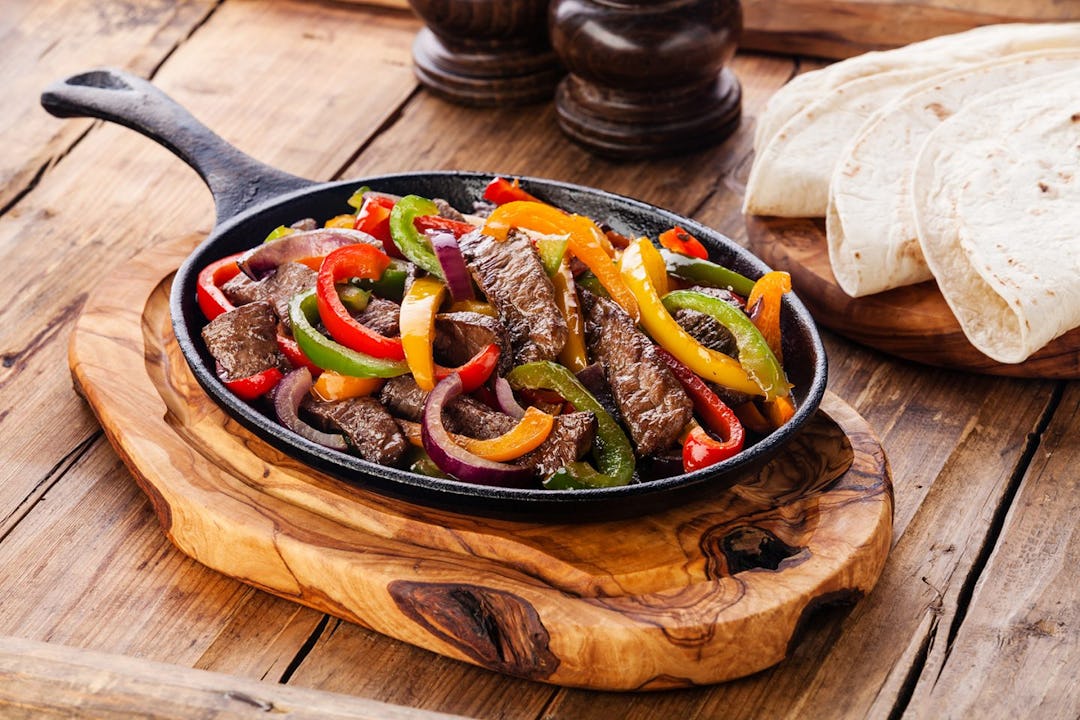
What Can I Eat At A Japanese Restaurant?
One of the best things about a Japanese steak house is that the hibachi chef often cooks in butter, so you’ll avoid those nasty industrial oils we mentioned earlier (also, who doesn’t want a front-row seat to a fast-chopping, fire-spouting food prep act that looks like it belongs in a Cirque du Soleil show?). Feel free to have the shrimp, steak, or chicken, along with some fire-grilled veggies, but avoid rice.
Due to the rice bed it’s served on, sushi isn’t keto, but sashimi (just raw fish) is. No dumplings, tempura, or sweet sauces for you, but miso soup, edamame, and seaweed dishes are fine.
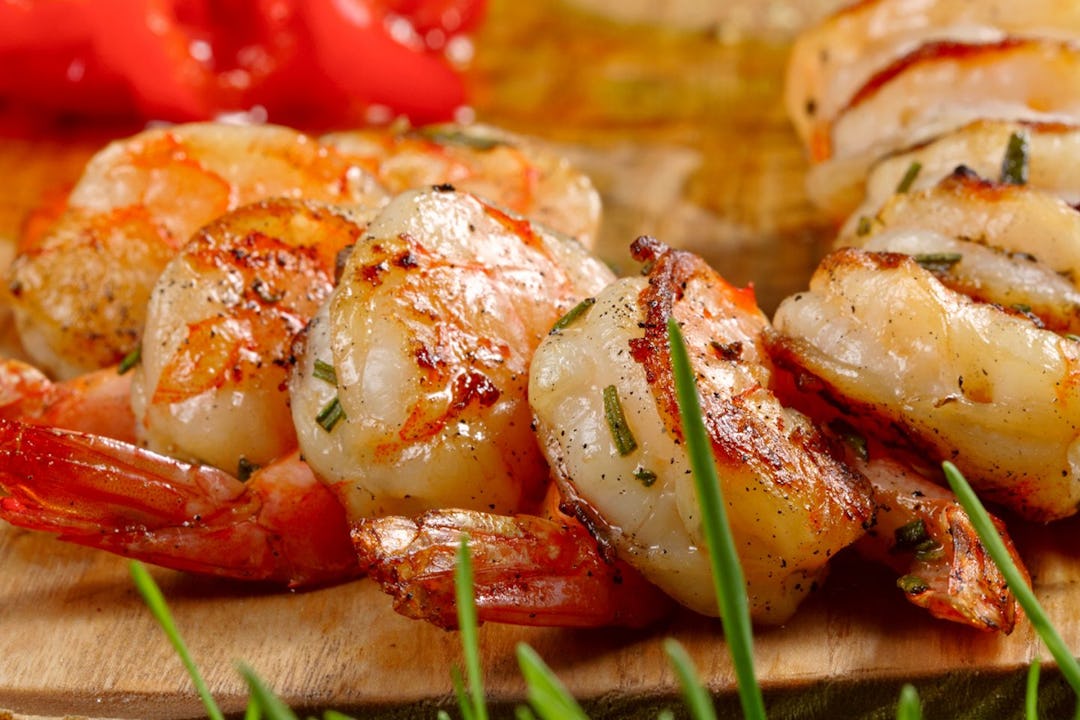
What Can I Eat At A Chinese Restaurant?
Sadly, the sweet and sour chicken is off the menu for keto folk. The same goes for egg rolls, wontons, and any other entrée drowned in a sauce that’s overly sweet. Yes, the fried rice tastes great, but it’s not going to cut it if you’re determined to stay keto (ditto all the other rice choices, even unadorned versions like brown). Your servers should be able to substitute steamed vegetables for any rice side.
Relax, you still have plenty of delicious options, including stir fried beef and vegetables, Moo Goo Gai Pan, Szechuan prawns, and egg drop soup—although you should ask if they can leave out any cornstarch they might use in cooking. Somewhat surprisingly, black bean sauce doesn’t contain that many beans and is fairly low carb. Lettuce wraps and chicken skewers should be fine as well. Ask your waiter to leave out the noodles.
If you’re really craving Asian flavor but want to know exactly what’s going into your meal, try Mongolian barbecue. You can specify every ingredient in your bowl, and they have multiple meat and veggie options that come free of sugar and starches.
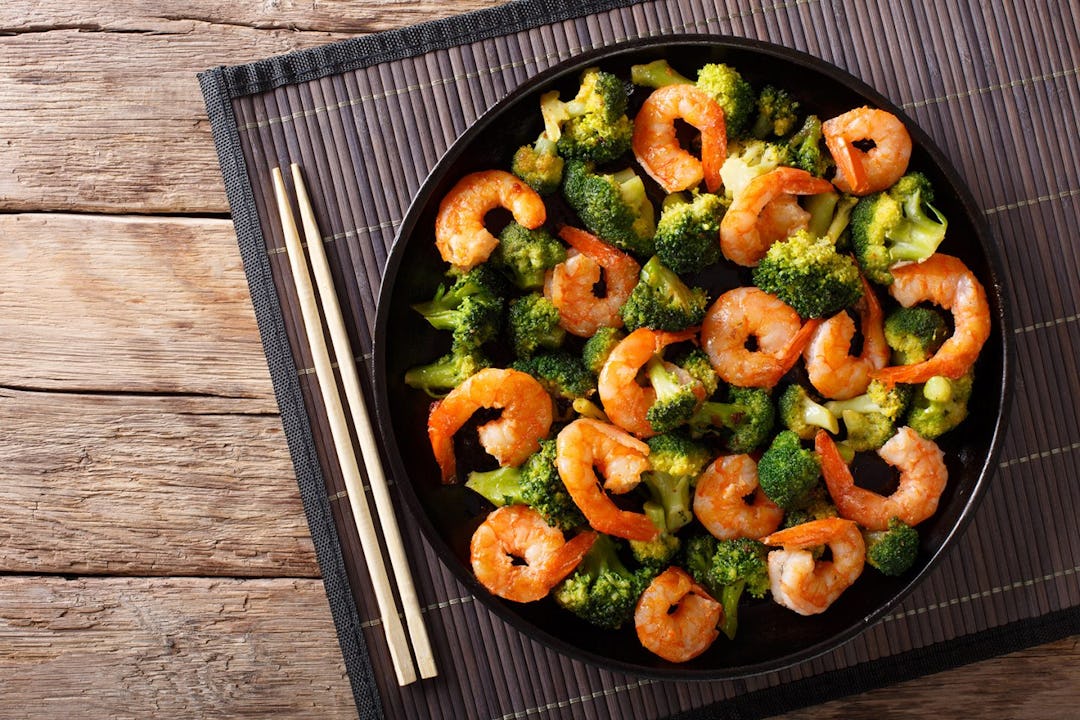
What Can I Eat At An Indian Restaurant?
There’s nothing like naan bread fresh out of the oven¦ but you won’t be having that. However, that clay cooker can offer up something else for you that’s almost as delicious: tandoori chicken. You should be good with most kebabs and chicken and goat options, from mild (korma) to medium (tikka masala) to hot (vindaloo). Meat in cream sauce dishes are purely keto.
Avoid curries with potatoes, and carb-laden side dishes like papadums, pakoras, and samosas. Order creamy saag (toasted cheese and spinach) instead. To add flavor to any meal, ask for ghee (clarified butter), which is pure fat. Raita, a dip made from yogurt, is a tasty option too.
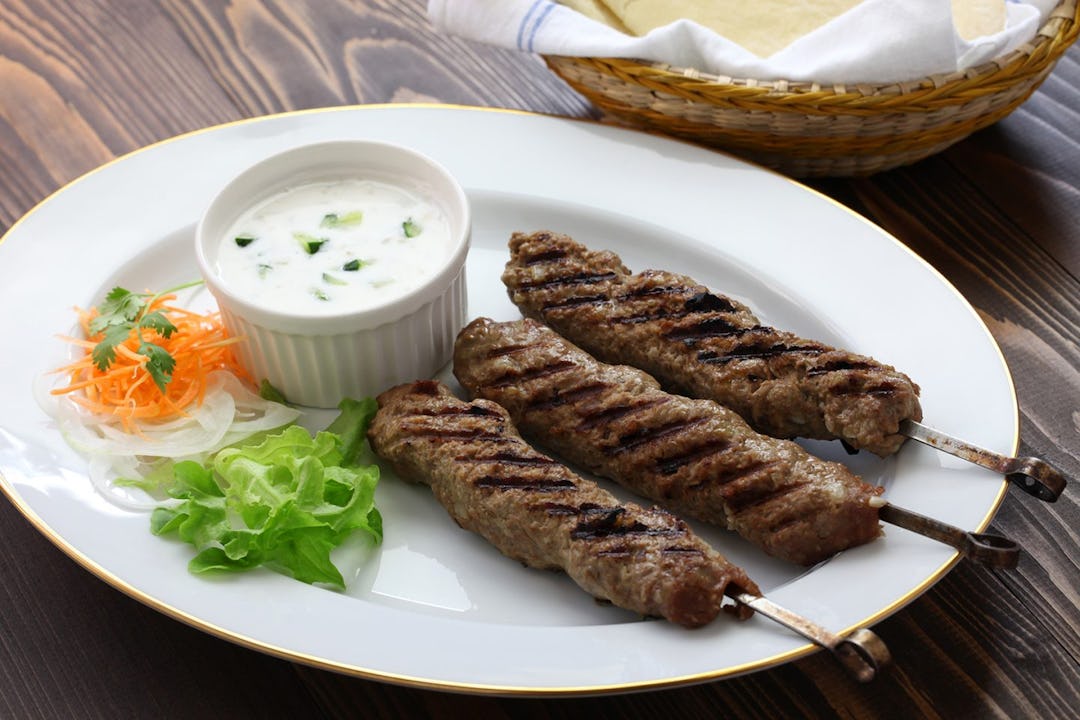
What Can I Eat At An Italian Restaurant?
Pasta and pizza! Just kidding. Maybe¦
Some Italian restaurants are now offering spaghetti squash as an alternative to grain-based noodles, and cauliflower crusts for their pizzas. If you find yourself at one that does, load them up with meat and veggie toppings.
No keto-friendly alternatives on the menu? Start with an antipasto platter—an assortment of meats, cheeses, and vegetables (although be aware of how your protein is adding up, as we warned you earlier). A thin soup such as minestrone also makes a good appetizer, if you can get them to go easy on the pasta or rice that’s usually included. Another one: carpaccio (thinly sliced beef or fish served with vegetables). For a main dish, order meatballs, steak with a side salad, shrimp, steamed clams or mussels, and cioppino (a fish stew). Say yes to olive oil, and no to sugary dressings like, fittingly, Italian. Tell them to hold the croutons and breads. Chicken and veal parmesan have plenty of fat, but the breading is too carby to be keto.
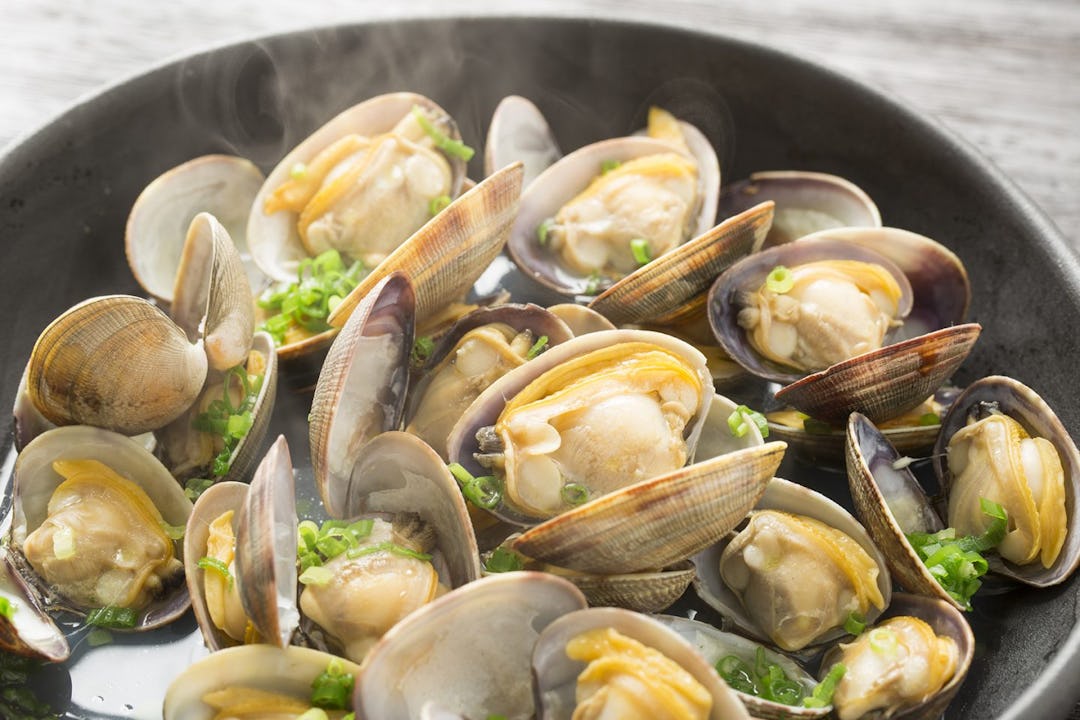
What’s the Best Keto-Friendly Fast Food?
You can get a great keto meal at just about any drive-through window, as long as you’re prepared to tell your servers how you want it. At burger and chicken joints, simply ask them to hold the bun/bread, or remember to take it off yourself. Some restaurants, such as In-N-Out Burger™, won’t require you to modify the existing menu. Just order the burger “protein style”. For that reason, if we had to choose one, the Protein Style hamburger at In-N-Out™ is our pick for the single best keto hamburger out there. You won’t have to explain yourself to the staff, the burger tastes great, and only packs 240 calories and 11 grams carbs for its 17 grams of fat and 13 grams protein, but the In-N-Out™ franchise is limited to just a few states in the southwest (California, mainly).
A close second, and a more widely available option, would be, believe it or not, McDonald’s™. If you order a bunless burger there, you’ll get 100 calories, six grams of fat, and eight grams protein for only three carbs.
With any burger order, watch out for special sauces—see if you can get them on the side or not at all. Apart from that, the only thing decidedly un-keto about standard orders at burger/sandwich shops is the dough they serve the meat on. The same rules apply to egg-based breakfasts. Lose the bun and the hashbrowns, and maybe double down on the eggs and cheese. If an avocado bowl is an option (such as at El Pollo Loco™), go for it.
For lighter fare, almost every convenience stop offers some kind of salad. Just be sure to pick out the croutons and be conservative with the dressing.
What Can I Eat At Buffalo Wild Wings™?
Chicken wings are generally very keto, given the protein and fat content, but it’s the sauces and glazes that can really get you here. However, a conservative order of regular wings with the dry lemon pepper or desert heat rubs contain just one gram of carbs per serving.
The worst offenders on the menu are the honey barbecue wings (36 grams of carbs), bourbon honey mustard (35g), and mango habanero (32g).
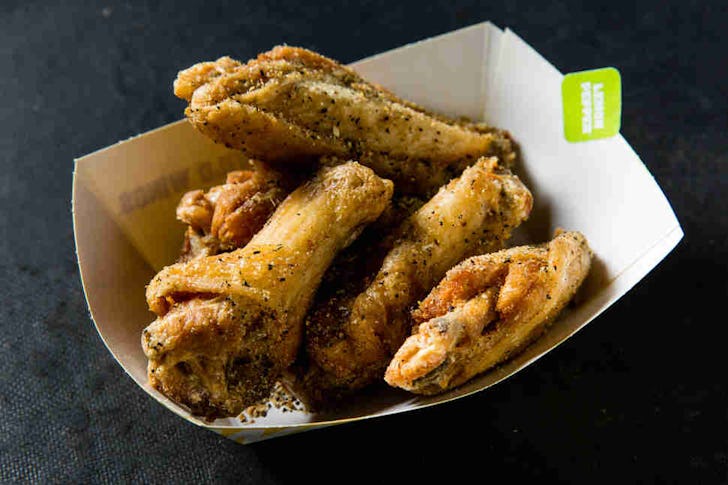
What Can I Eat At Chipotle™?
With 50 grams of carbs, the giant tortilla is a ketosis buster all by itself. Add rice and beans and you’re looking at a whopping 112 grams. Want a large side of chips? Now you’re up to 239 grams. The good people at Chipotle™ must have realized that their establishment was a carb-killer, because they recently rolled out a new menu of significantly lower-carb alternatives.
The aptly named Keto Salad Bowl has just 15 grams of carbs, with 42 grams of fat and 32 grams protein. The Whole30 Salad Bowl comes in at 19 grams carbs, 34 grams fat, and 27 grams protein. Then there’s the Paleo Salad Bowl, with its 21 carbs, 29 fats, and 28 proteins. Though Chipotle™ is also touting its new Double Protein Salad Bowl, steer clear if you want to stay in ketosis, as it packs in 71 grams of carbs.
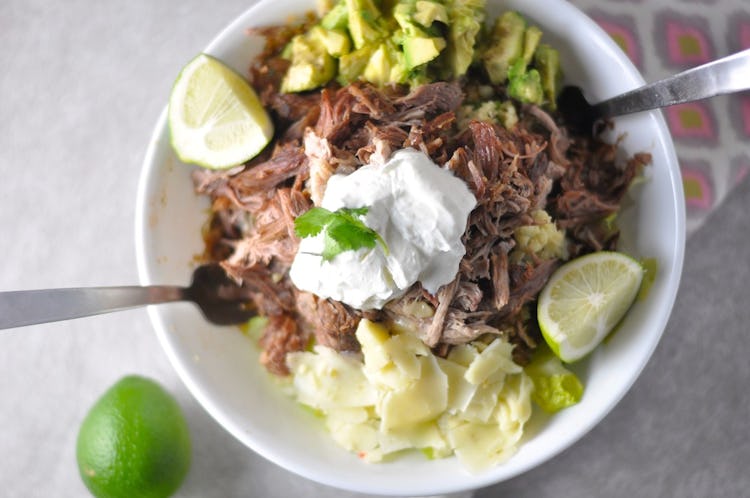
What Can I Eat at Olive Garden™?
With 25 grams of carbs each, the breadsticks are not something you want to nosh on mindlessly (or at all). And while the asiago alfredo is money, it’s also a carb-fest (92 grams). Furthermore, don’t even look at the lobster mac and cheese. It packs nearly 100 grams carbs, enough to take you as far away from ketosis as the Arizona Cardinals are from a Superbowl.
So is there anything that grows in this garden you CAN eat? Absolutely. The chicken piccata comes in at just 12 grams of carbs, and while the lasagna
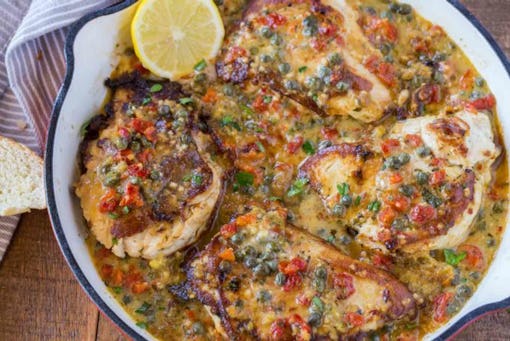
What Can I Eat at Taco Bell™?
Taco Bell servers will gladly prepare most of their burritos as tortilla-free bowls, and the champ might well be the Beefy 5-Layer Burrito—sans the two-tortilla shell. It’s a filling, classic-style burrito with meat, cheese, and some beans. The tortilla-less version of the Naked Egg Taco Bundle is another solid option, as is the Grande Scrambler. The main thing to avoid here is anything with rice or flour-based wraps.
The worst choices? The XXL Grilled Stuft Burrito (97 grams carbs), the Quesarito (68 grams), and, on the breakfast menu, all three varieties of the Breakfast Crunchwrap (51 grams).
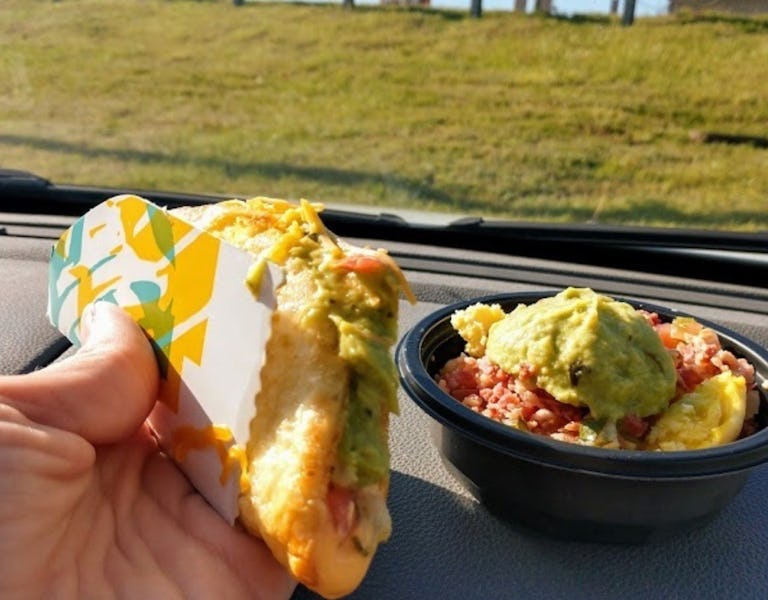
What Can I Eat at McDonald’s™?
As mentioned above, just order the patty without the bun. They should be able to accommodate you at any burger spot, be it McDonald’s™, Burger King™, Wendy’s™, Five Guys™, etc. Ketchup, barbecue sauce, and other “special” dressings are still a concern, so have them taken off if you can, but the dough is the main culprit to eliminate in order to keep keto. Very few of these places will offer grass-fed beef, which isn’t ideal, but a little conventional beef eaten sporadically, despite all its hormones and antibiotics, won’t kill you.
French fries? Forget about it. Even the small size at Ronald McDonald’s™ house contains 29 grams of carbs, while the Supersize will completely detonate your keto diet with a whopping 77 grams. The Bacon Ranch Grilled Chicken Sandwich is a worthy opponent though: 320 calories, 14 grams fat, eight grams carbs, and a massive 42 grams protein—which is more even than their burgers, making it a good selection for higher-protein eating Mod Keto adherents.
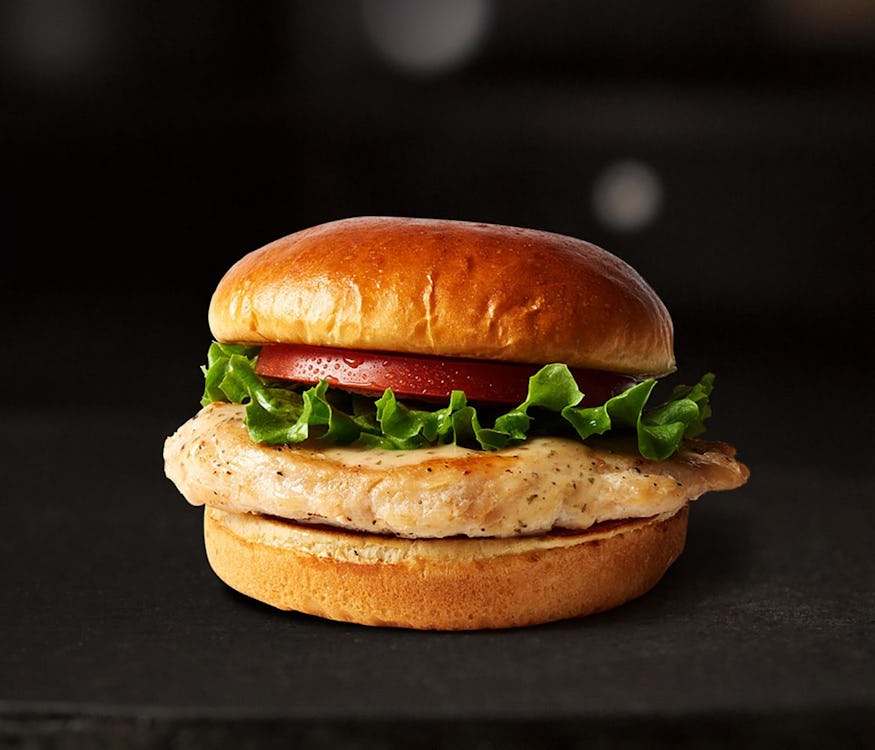
When In Doubt, Fast
In conclusion, yes, Virginia, there are ways to stay keto when you can’t prepare your own food. You just need to be more intentional with your choices, and not concede to impatient waiters/waitresses who want to stick to what they know. If all else fails and you can’t get keto accommodations, you do have one other option to exercise: fasting.
Often times, not eating at all is a better decision than eating badly. You may need some time to adjust to it, but fasting will ultimately help you feel more alert, and that’s just what you need when you’re traveling or having a hectic day (situations that would tempt you to eat bad food from a drive-through window). One study showed that fasting helps boost the brain’s resistance to damage and degeneration, and it’s been linked to improvements in blood pressure, various health conditions, and, of course, weight loss.
And fasting doesn’t mean you can’t consume anything at all. You might be surprised how satiating water or black coffee can be—use them to tide yourself over until you can get healthy food in front of you again.
“One of the benefits of being on the keto diet is metabolic flexibility and increased resilience,” says Brad Kearns. “If you’re keto, you should be able to go for several hours without eating. So sometimes I’ll just have a handful of macadamia nuts in the morning and an omelet in the evening. I know that might sound odd to have breakfast at night, but if you’re keto, then you’re already bucking a societal convention.”
If you find yourself in a strange town, surrounded by fast food that you can’t improve with a few tweaks, treat it as an opportunity rather than a nuisance. “Try fasting and exploring a new city,” says Kearns. “Instead of spending half your trip inside, sitting down at restaurants.”
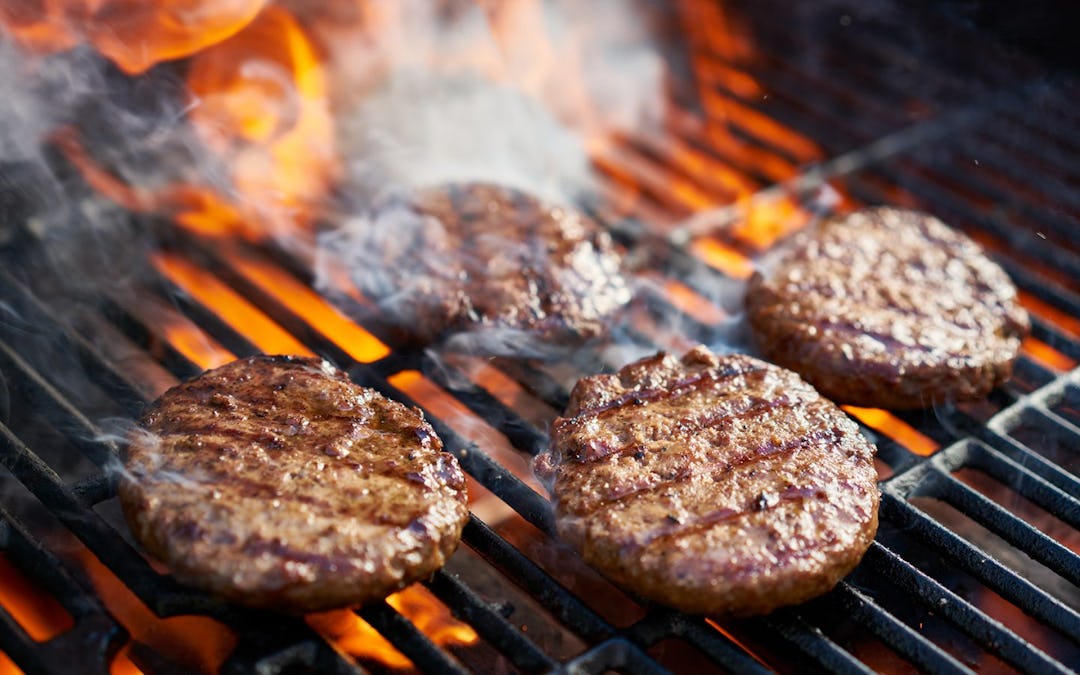
)
